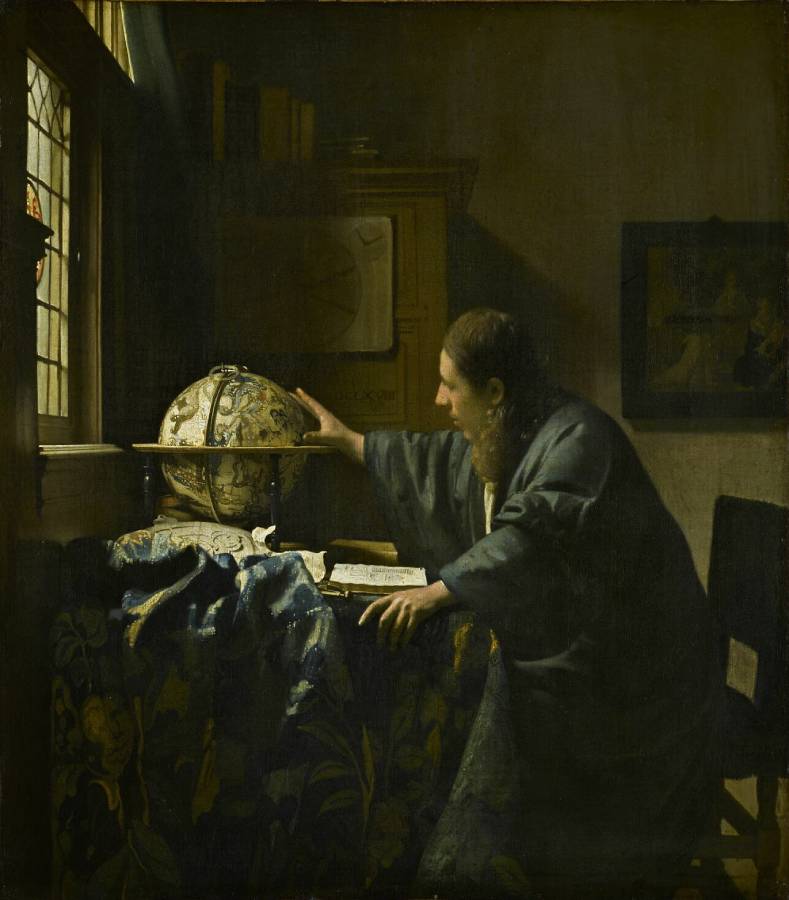Vermeer, Jan (1632-1675)
The Astronomer (De astronoom)
1668
Oil on canvas 51 x 45 cm
Musée du Louvre, Paris
Celestial globe by J. Hondius (1600) and astronomy manual by Metius (1621) opening to the chapter devoted to the stars, with engraving of a wheel astrolabe invented by Metius. Compass and astrolabe from the 16th century. Model sometimes identified, without proof, with the scholar Antoni van Leeuwenhoek (1632-1723), still too little known in 1668–1669. At the bottom, a Moses saved from the waters, a painting by P. Lely from his Dutch period (before 1643) and perhaps from Vermeer‘s own collection and alluding here to divine Providence, in counterpoint to activity (vain or on the contrary wise?) of the astronomer. Or the theme of the scientist at work, dear to the Dutch tradition (see Rembrandt, Dou) and also close to Saint Jerome and hermits in prayer or meditation. The Geographer, S.D. 1669 (date retouched but probable), from the Frankfurt museum, associated with The Astronomer until 1797 and acquired by the German museum in 1885, is not exactly a pendant, but a very close variation on the same iconographic theme, and their antithetical relationship which, moreover, does not translate on the formal level, has undoubtedly been exaggerated (earth sky, thought action, etc.). Dutch frame from the 17th century. (mirror frame?) specially donated for this painting by the De Boer gallery, Amsterdam, in 1983. Signature: S.D. towards the center, to the right of the globe: IVMeer 1983 (in Roman numerals; the first three letters intertwined; signature and date slightly retouched). The date has sometimes been read as 1673 (see the drawn copy of Delfos in 1794), but wrongly. (Louvre)
